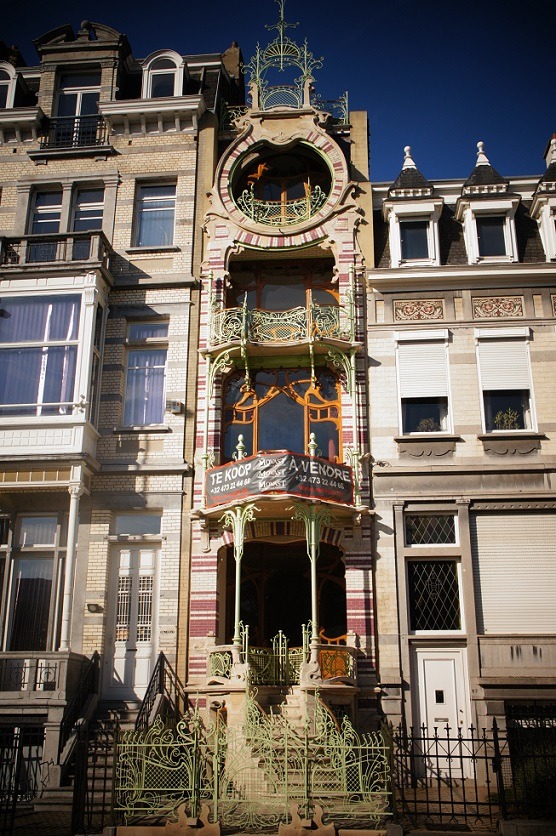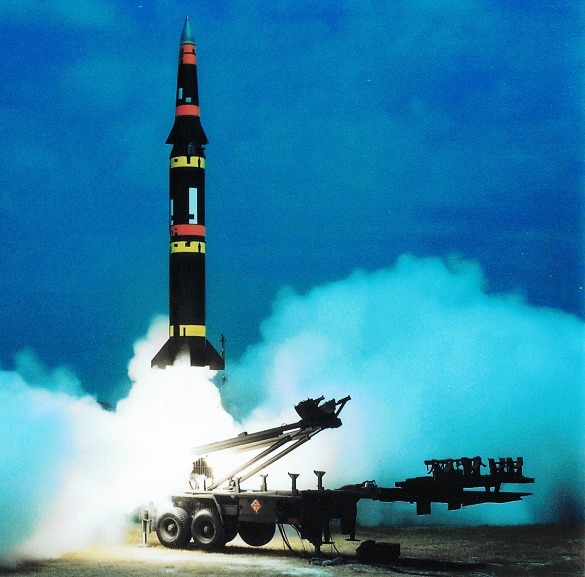1983 – somewhere in Wallonia, adjacent to Mons. Generals and officers gathered in a situation room to control the movements of tens of thousands of American soldiers advancing across Western Europe. Their goal: repel an invasion by an enemy code-named “Orange” before nuclear war became inevitable. But is it already too late? At the same time, in a Moscow hospital, KGB agents brought a stream of messages to the bed of the paramount leader of the Soviet Union. He trusts them; he trained them himself after heading this organisation for more than a decade. And all of them reported, in detail, on the exceptional deployment of NATO forces. Ailing and exhausted, this man still held the button that could save the Communist world by using its nuclear weapons before the West does it.
This sounds like a spy movie. It might remind you of a Tom Clancy novel. And still, this really happened. In late 1983, unbeknownst to the general public, East and West came as close as possible to triggering a nuclear war. The 1983 war scare may very well have been the nearest we have been to total annihilation. This is the story of Able Archer.
In 1983, the United States-led NATO forces undertook a massive, real-life scale exercise, simulating a nuclear attack. It was just a drill, but the Soviets had their eyes everywhere. The all-powerful KGB followed every detail of this exercise, without realising that it was an exercise. And when the top of the Soviet-led Warsaw Pact military alliance heard of it, they thought the drill was the real deal. And they stopped short of retaliating with their own nuclear weapons.
This is the basis of what happened during Able Archer, the name of the NATO rehearsal for a nuclear strike. At the time, it went virtually unnoticed. The West carried on with its drill not even realising that the Soviets were taking it seriously and preparing their own counter strike. When the Able Archer exercise was over and every NATO official resumed their normal routine, the Soviets themselves may still not have understood it had only been an exercise: they simply assumed the West chickened out after detecting the Warsaw Pact preparations for retaliation.
A few years later, Ronald Reagan, at the time President of the United States, received the first reports of a close brush with nuclear war. Although he was amazed that the Soviets feared him to that extent, the President decided to tone down the warmongering and sought a relative appeasement with Moscow. However, the wider public had to wait for the collapse of USSR in 1991 to learn more about Able Archer. Since then, the controversy has made the rounds: did we really come close to blowing up the planet because the Soviets took a practice drill too seriously, or is the whole story overblown?
Let's start with the actors. Relations between the two super powers had begun to improve after the two big Ks – Kennedy and Khrushchev – initiated a policy of conciliation. Although Khrushchev’s successor Leonid Brezhnev resumed pressure, the 70s were relatively calm. But in 1980, a conservative Hollywood actor, Ronald Reagan, entered the White House in a landslide victory. This heralded a dramatic rise in tension between the two sides.
From the start, Reagan's rhetoric was radically anti-Soviet, thereby abandoning his predecessor's more careful phrasings. Calling the USSR an “Evil Empire”, and promising to relegate it to “the ash heap of history”, Reagan knew how to captivate his audience and the entire decade will be influenced by his policies. But his voters were not the only ones listening.
Across the Iron Curtain, Brezhnev had brought the USSR into stagnation. When he died in 1982, the USSR was governed by a corrupt gerontocracy. The Soviet leadership that faced Reagan was made up of a gang of complacent apparatchiks, who were comfortably settled in their armchairs and in their preconceived ideas. Fossilised in their own rhetoric and propaganda, they took Reagan's discourse very seriously. Amongst them, the idea that the US may decide to strike first did not seem so far-fetched anymore.
The second main actor of the Able Archer crisis then enters the story. He is a powerful mastermind with a decaying liver: Yuri Andropov.
When Brezhnev died, Andropov took over as the Soviet Union’s Secretary General of the Central Committee of the Communist Party. He, too, was old, and his health was already slumping. But he is not like the other geriatrics in Moscow. For the last fifteen years, Andropov had been no less than the head of the KGB. This makes him not only remarkably clever, but also completely intoxicated by the Soviet propaganda he helped shape for years. To make matters worse, Andropov was terminally ill for most of his presidency, and would die in 1984 after less than two years at the top of the USSR. When Able Archer took place, his dying kidneys kept him restricted to a hospital bed from which he controlled the entire Soviet empire.

Yuri Andropov, the longest-serving Head of KGB who became the ruler of the Soviet Union after Brezhnev's death. By 1983 the clever master spy was also an ageing, ailing man who believed his own Communist propaganda.
So why would Andropov believe that Able Archer was a real American attack? This was in good part because of NATO's latest toy, the Pershing II missile.
For most of the Cold War, both superpowers primarily used intercontinental missiles, as a way to deliver each other’s atomic bombs. The best way to answer it was to find methods of detecting the launching of these missiles and answering it with your own launch. Using radar and satellites, the USA and USSR both monitored each other's launching pads and were looking to respond to any sign of a missile launch with a similar attack. But the Pershing II changed this.
Up to the 80s, missiles were already a terrifying weapon capable of quickly delivering a nuclear bomb to your opponent's territory, with barely enough time to ponder the decision of answering or not. Pershing II missiles were so fast that, from their launch pads in Western Europe, they could reach the Soviet Union in less than ten minutes, which was hardly enough time for Andropov and the other ageing leaders to get out of their armchairs. In this version of Dr Strangelove, the Soviets would not even make it to the control room.
So Andropov, as head of the KGB in the final days of Brezhnev's rule, devised the only possible way of answering the Pershing II missiles: operation RYAN.
This codename was a massive KGB spying effort in the West. Agents were supposed to monitor absolutely anyone related to the launching of Pershing II missiles and report any sign of increased activity. Since they would not have the time to react once the Pershings were launched, the Soviets decided to make sure they would know about the launch before it happened. This is operation RYAN, and this is what made the Soviets extremely nervous: from now on, a radar blip was not even necessary to trigger a counterstrike, the Soviets would consider themselves under a nuclear attack if the guys in charge at the NATO headquarters decided to rush a bit too much at work.
Thus, during the Able Archer exercise in November 1983, the KGB spies involved in Operation RYAN detected signs that the Pershing II would be launched, and the Soviet leadership considered a pre-emptive first strike – this is the story of Able Archer, as told since the fall of USSR.
But is the story credible? Other voices, including past American and Soviet officials in positions of power, have argued that the Able Archer war scare is an exaggeration. For some, the Soviets never reached such a level of concern. For others, the Soviets pretended afterwards that they were on the verge of launching their nuclear weapons in order to scare the Americans into toning down their hostile foreign policy. As masters of disinformation, the KGB would have purposely led the Americans to believe that they should reduce their nuclear capabilities in order to avoid accidentally triggering a nuclear war.
The primary source of information about the Able Archer war scare is a Soviet defector, Oleg Gordievsky, who worked as a KGB agent in London for years before switching sides. Gordievsky was interviewed by the CIA and informed Reagan that Able Archer almost triggered a Soviet nuclear response. He remains, however, pretty much the only former Soviet in any position of power to have highlighted the Able Archer incident. So was it all a hoax?

Oleg Gordievsky, former head of the KGB in London, is the highest-ranking Soviet defector in history. He is the one who warned President Reagan about the degree of paranoia in the Soviet Union and the risk of inadvertently triggering a nuclear war.
A remarkable work of information gathering and analysis has been performed by the George Washington University, who have put all the documents they obtained and all their comments on a website. Through a clever use of the Freedom of Information Act, their researcher looked deep into formerly classified documents and gave us a perspective from the top of the chain of command. And they reveal another element that gives credibility to the war scare hypothesis: Able Archer was not the only exercise that year. It was merely the conclusion of longer and more elaborate exercises that involved tens of thousands of soldiers. Dubbed Reforger, that drill preceded Able Archer and involved the arrival in Western Europe of massive regiments of NATO soldiers from abroad. KGB also detected this in the framework of operation RYAN. It left the Soviets with the impression that the nuclear strike was indeed the spearhead of an armed invasion of the Communist realm.

One of the many formerly classified documents now available thanks to the research of Nate Jones from the George Washington University - a sketch used by the NATO heads to present the Reforger exercise: an important deployment of troops in Europe to simulate a war with USSR, of which the Able Archer nuclear drill was only a part.
There were other factors in the renewal of tension between the two antagonists in the early 80s: the downing of a Korean civilian airliner by the Soviet air force after it trespassed into their airspace and the war in Grenada. But the biggest risk came from the involvement of all the real actors who would be active in a real NATO nuclear strike, from technicians to actual ministers and even national leaders like Margaret Thatcher and Helmut Kohl. This led the KGB spies involved in RYAN to believe that something was actually about to happen – a fear reinforced by the sudden, unexpected deployment of a massive troop contingent in Western Europe.
The remarkable work of Nate Jones from the George Washington University underlines the importance of Reforger in fostering fear about Able Archer. The website (1) provides a fascinating reading and warns that more documents may become available (or should be made available) in the future. A thorough exploration of this database will allow anyone to form an opinion on the true extent of what happened in 1983. But it remains certain that Reagan and other high-ranking American officials took the matter seriously.
Whether Able Archer really brought the world to the brink of nuclear apocalypse or not, it remains interesting to see how fear alone could trigger an actual disaster. In these times of international tensions and anxieties, it may be interesting to keep in mind the story of Able Archer.
By Julien Oeuillet

